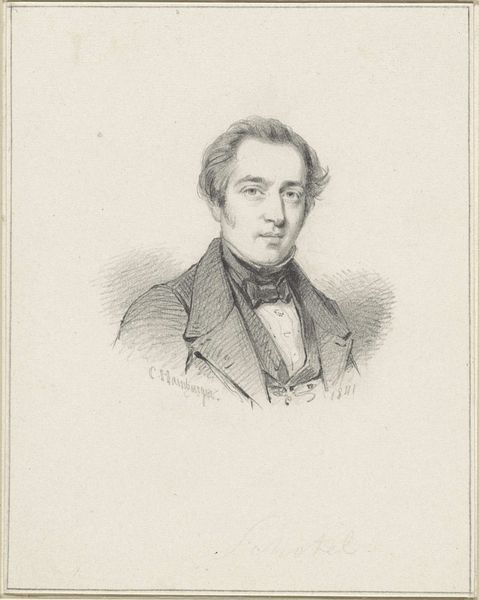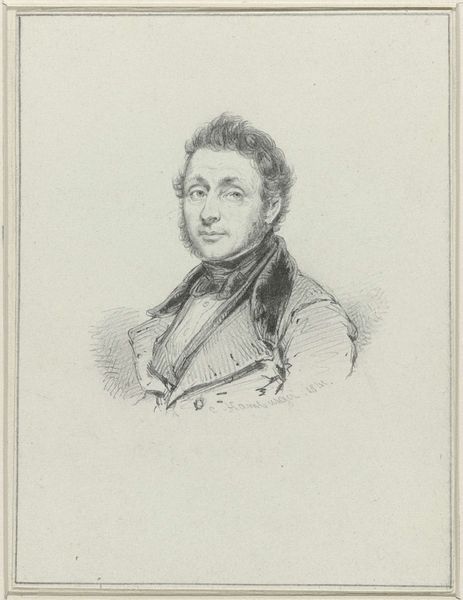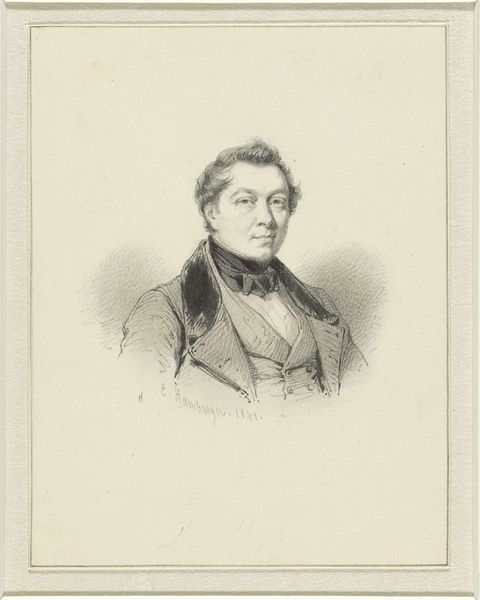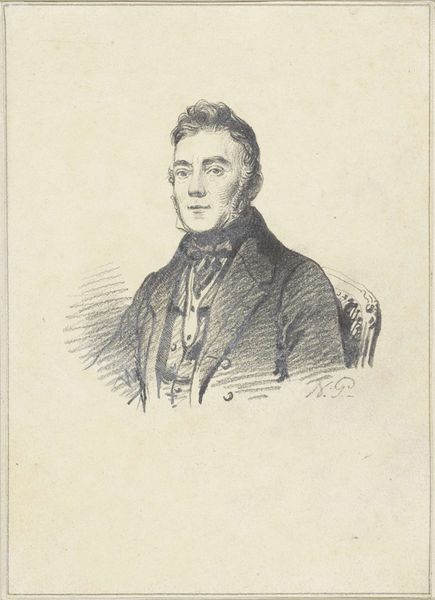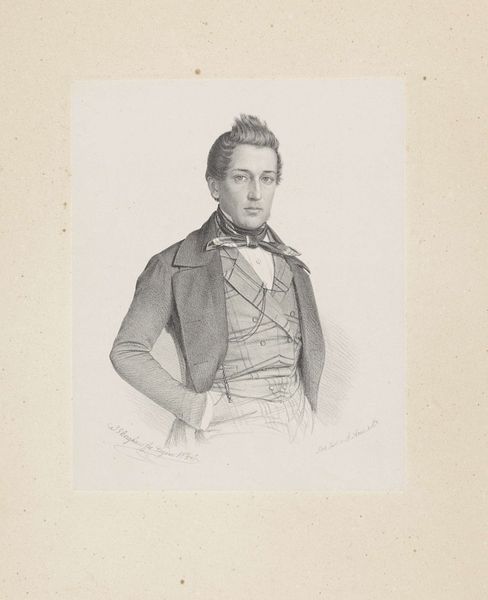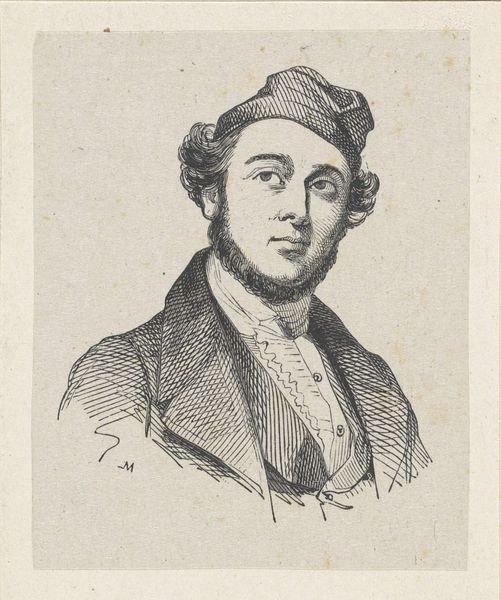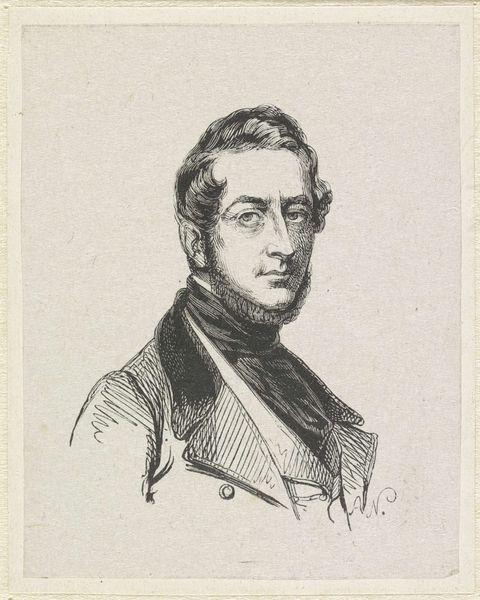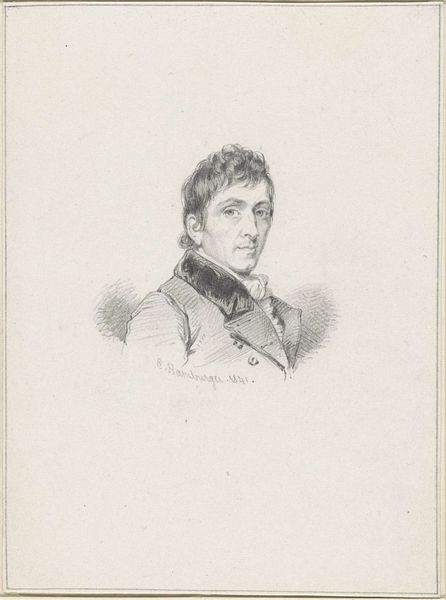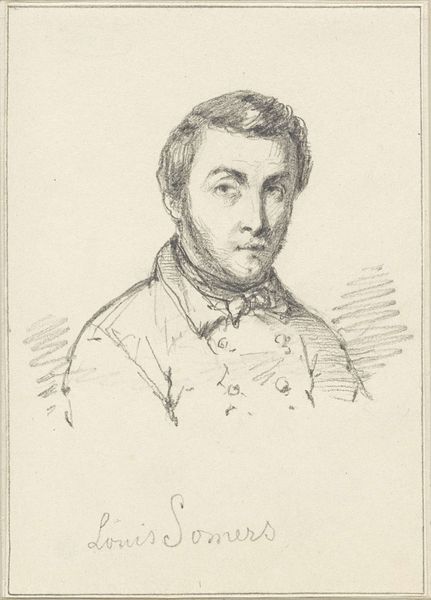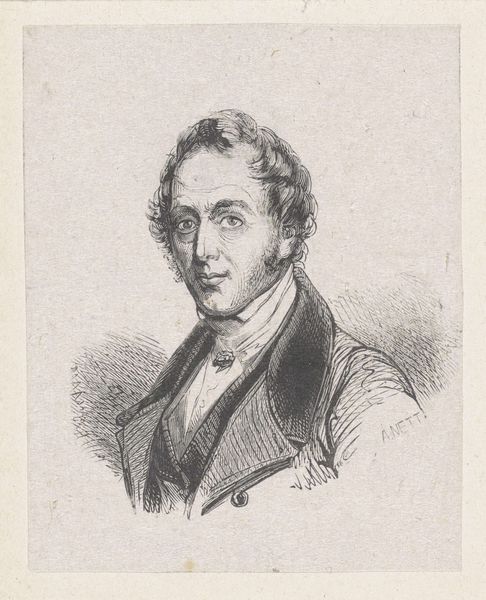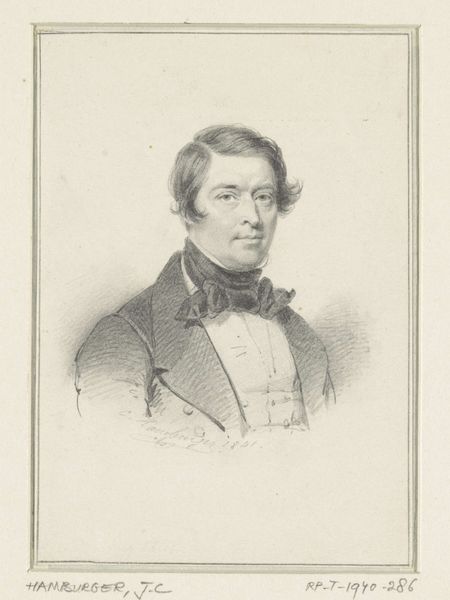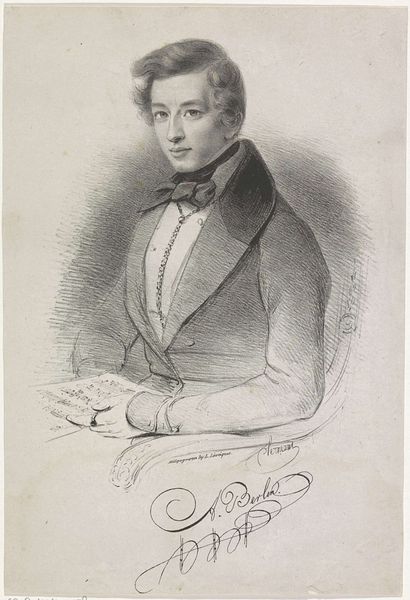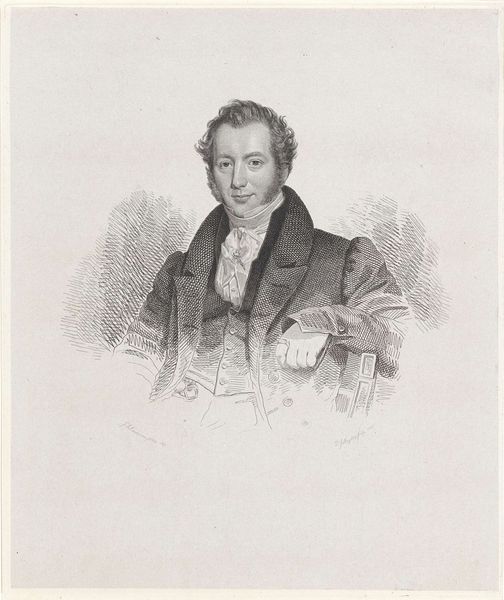
drawing, pencil, graphite
#
portrait
#
drawing
#
pencil sketch
#
figuration
#
pencil drawing
#
romanticism
#
pencil
#
graphite
Dimensions: height 118 mm, width 88 mm
Copyright: Rijks Museum: Open Domain
Editor: Here we have a pencil drawing entitled "Portret van Johannes Philippus Lange," created sometime between 1819 and 1871 by Coenraad Hamburger. I’m struck by how delicate the lines are; it seems so precise and yet fragile. What strikes you about this work? Curator: It’s precisely that tension—the intersection of precision and delicacy—that draws me in. Look at the way the artist renders the details of the coat. It's not just about depicting clothing, but about portraying the industry, the labour, involved in its making, its presence as a material object within a social and economic system. How does the graphite, a material itself extracted and processed, become an element of representation, shaping our understanding of Lange’s social standing? Editor: I see what you mean. The attention to detail does hint at the labour and resources involved in creating the coat, making it more than just a piece of clothing. But does the artist intend to make a statement about the means of production? Curator: The intention is perhaps less important than the outcome. As a materialist, I’m interested in the drawing as evidence, revealing the relationship between art, labor, and consumption in 19th-century society. This portrait becomes a site where the tangible realities of material existence are made visible. What do you think this mode of portraiture might say about access and status during the period? Editor: That's an interesting point; by focusing on the materiality of the sitter’s garments, it subtly reflects societal structures. I guess I never considered how something as simple as a pencil portrait could be so loaded with meaning related to production. Curator: Exactly! Art isn't just about aesthetics or skill; it is fundamentally entwined with the material conditions of its creation and reception. Examining the art’s means of production helps illuminate a range of social and cultural power structures from the period. Editor: I’ll definitely look at portraits differently from now on, considering the materials and processes as key elements! Thanks!
Comments
No comments
Be the first to comment and join the conversation on the ultimate creative platform.
